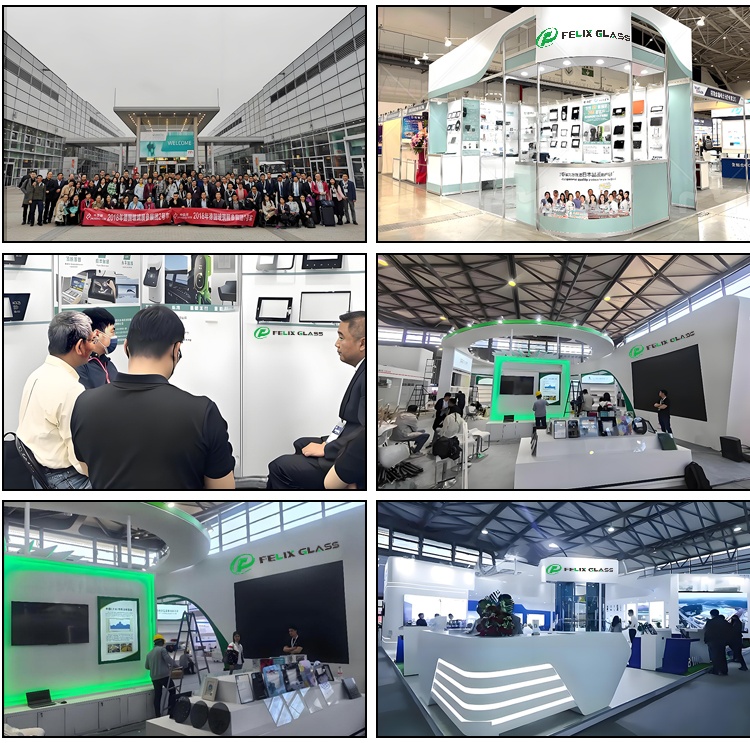In-Depth Analysis of Optical Glass Dome Cover
1. Cutting-Edge Materials and Advanced Craftsmanship
1.1 Substrate Innovation
Adopts high-purity H-K9L optical glass, processed through triple purification technology to control impurity content below 0.008%, ensuring no absorption peaks in the visible light band and eliminating chromatic aberration and light attenuation at the source. The material undergoes annealing stress relief treatment, with internal stress birefringence value < 3nm/cm, avoiding optical distortion caused by stress concentration.
1.2 Intelligent Manufacturing Process
- Nanoscale Polishing: Utilizes Magnetorheological Finishing (MRF) technology to achieve a surface roughness of Ra = 0.3nm and surface shape accuracy of PV = λ/12 (λ = 632.8nm), reducing reflection loss to 0.1% for nearly lossless light transmission.
- Aspherical Customization: Supports high-precision aspherical processing, with sag error controlled within ±0.01mm, adapting to the complex optical requirements of large-aperture lenses and effectively correcting aberrations and coma.
- Coating Technology: Optional multi-layer broadband anti-reflection (AR) coating, increasing average light transmittance to 99.2% in the 400-1600nm band; or nano-scale super-hard anti-fouling coating, with a surface contact angle > 110°, allowing easy removal of oil stains and fingerprints.
2. High-Performance Parameters
Dimension Parameter Indicators Industry Comparative Advantages
Optical Performance - Full-Band Transmittance: 99.2% (after coating) - Abbe Number: 58.7 - Dispersion Coefficient: < 0.005 Surpasses the industry standard of 95% transmittance for clearer imaging and truer colors
Physical Properties - Impact Strength: 12MPa (3x that of ordinary glass) - Operating Temperature: -50℃~120℃ - Thermal Expansion Coefficient: 7.1×10⁻⁶/K Adapts to extreme cold to high-temperature environments without cracking or deformation
Precision Parameters - Spherical Surface Shape Error: PV = λ/12 - Local Error: < λ/50 - Edge Thickness Tolerance: ±0.05mm Semiconductor-level precision, suitable for micron-level optical systems
3. Core Product Competitiveness
3.1 Ultimate Optical Experience
With ultra-low dispersion and high transmittance, it can improve lens resolution by 20%. Even in special spectral scenarios such as infrared night vision and ultraviolet detection, it maintains a distortion rate < 0.1%, meeting the needs of scientific research-level image acquisition.
3.2 Extreme Environment Resistance
Passes salt spray test (96 hours without corrosion), dust test (8 hours without wear), and drop test (1.5m free fall without breaking), with an IP69K waterproof rating. It can operate stably in highly harsh environments such as deep seas, deserts, and volcanic craters.
3.3 Full-Scenario Adaptability
- Flexible Sizing: Supports customization of diameter (10-500mm) and wall thickness (1-10mm) with a tolerance accuracy of ±0.03mm;
- Interface Compatibility: Pre-set with various mounting structures such as threads, flanges, and buckles, compatible with 99% of mainstream equipment;
- Function Expansion: Provides customized solutions for special needs such as anti-static coating (surface resistance < 10⁹Ω) and anti-glare treatment (reflectivity < 0.5%).
4. Industry Application Solutions
4.1 Intelligent Security Field
Provides optical protection for UAV electro-optical pods and perimeter monitoring systems, maintaining clear imaging even in -40℃ extreme cold environments, supporting all-weather monitoring in scenarios such as border defense and forest fire prevention.
4.2 High-End Medical Equipment
Serves as a core optical component for surgical robot vision systems and molecular imaging equipment. Its high transmittance and low distortion ensure the accuracy of surgical fields of view, and it has passed biocompatibility testing (ISO 10993 certification).
4.3 Industrial Intelligent Manufacturing
Adapts to 3D lidars and machine vision inspection equipment, operating stably in 120℃ high-temperature production lines. It supports micron-level precision inspection, improving the quality inspection efficiency of auto parts and semiconductor wafers.
4.4 Scientific Research and Astronomical Observation
Applied in equipment such as astronomical telescopes and spectrometers, its ultra-low thermal expansion coefficient and high-precision surface shape reduce the interference of environmental factors on observation data, supporting deep-space exploration and material analysis.
5. Quality Verification System
Every dome cover undergoes:
- Optical Testing: Real-time surface shape detection with a laser interferometer and full-band transmittance scanning with a spectrometer;
- Environmental Testing: High-low temperature cycling (-50℃~120℃, 100 cycles) and humidity alternation (95%RH, 48 hours);
- Life Simulation: UV aging test (500 hours) to ensure no optical performance attenuation for 10 years.
Through multi-dimensional technological breakthroughs and scenario-based application design, this optical glass dome cover is not only an optical protection component but also a core part that enhances equipment performance, redefining the reliability standards in the precision optics field.










